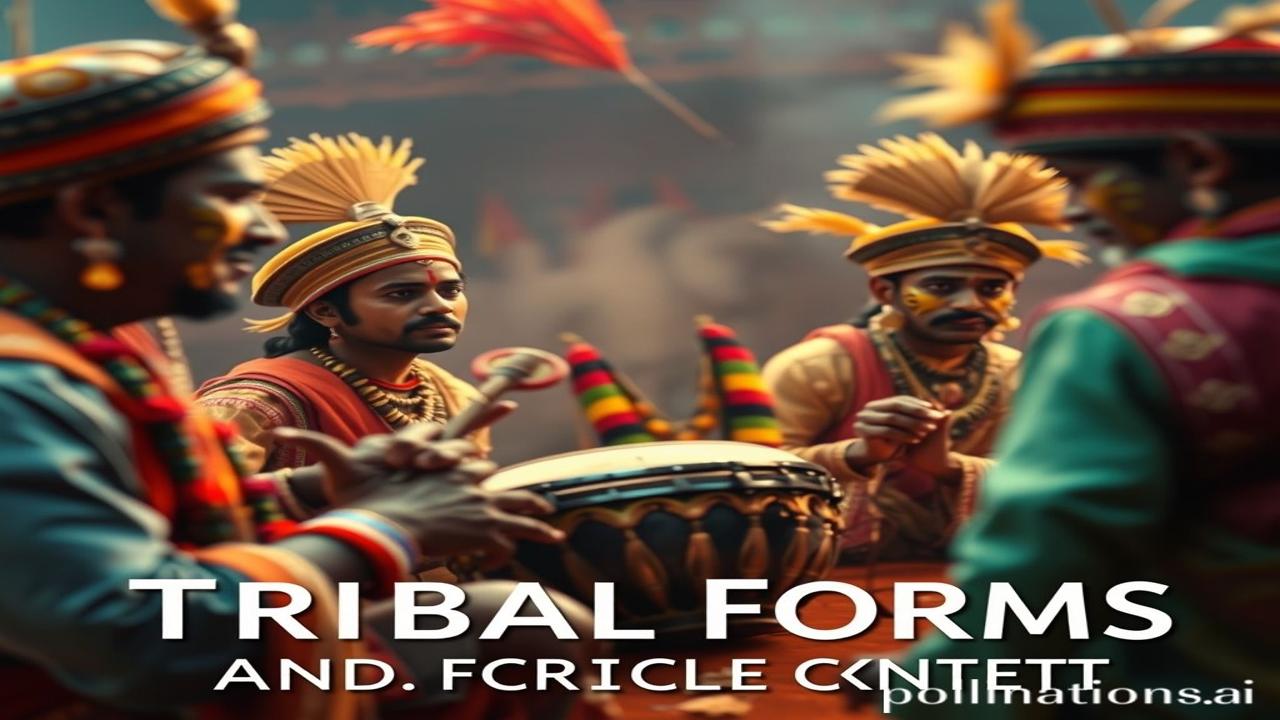Waqt ki Dhool Mein Sangeet Ki Goonj: Uncovering India’s Tribal Music
Kabhi socha hai, jungle ki gehriyon mein, aag ke aas-paas baithe aadivasiyon ki awaaz kaisi hoti hogi? Kitni kahaniyan, kitne dukh, kitni khushiyan un sangeeton mein chhupe honge? Waqt ki dhool mein dafn, lekin aaj bhi dhadakti hui, yeh hai Bharat ki tribal music ki dastaan.
Tribal Music: Kya Hai Yeh Aur Kyun Zaruri Hai?
Tribal music, yaani aadivasi sangeet, sirf sangeet nahi hai – yeh unki life hai. Yeh unki dharti se, unke riwazon se, unke bhagwaan se judi hui hai. Yeh koi ‘entertainment’ ka sadhan nahi hai, balki unki zindagi ka ek hissa hai. It’s not just about tunes; it’s about tradition, belief, and community.
Yeh sangeet hazaron saalon se chala aa raha hai. Lekin iska koi exact date nahi hai. Different tribes, different regions, different music styles. From Jharkhand’s mandar beats to Nagaland’s haunting vocal harmonies, har state ki apni alag pehchaan hai. Isliye, it’s not just one thing; it’s a vast, diverse ecosystem of musical expressions.
Is sangeet ka importance yeh hai ki yeh unki Sanskriti ko zinda rakhta hai. It’s the glue that holds their communities together. Without it, their traditions, their languages, their very identity would be threatened. So, preserving tribal music is preserving a piece of India’s soul.
Zamini Sach: Logon Ki Zindagi Mein Sangeet
Imagine a Baiga tribal village in Madhya Pradesh. Subah se lekar shaam tak, sangeet unki zindagi mein basa hua hai. Jab women gehun pees rahi hain, toh woh rhythmically gaati hain. Jab men jungle se lakdi la rahe hain, toh woh apne devtaon ke liye bhajan gaate hain.
“Arre Ramu kaka, aaj toh tumhara dhol bhi bajega, na?” someone might say to an elder. He replies with a toothless grin, “haan beta, aaj devi maa ka puja hai. Sangeet toh zaroori hai!”
Evenings are especially important. After a hard day’s work, everyone gathers around the bonfire. The mandar drums start beating, the flutes start playing, and everyone starts dancing. It’s a way to forget their hardships, to celebrate their unity, and to give thanks for the blessings they have.
Ma Rukmini, the village elder, sings a song passed down through generations. The lyrics tell stories of their ancestors, of their struggles, of their triumphs. For the younger generation, it’s a lesson in history, a reminder of who they are.
Dharohar Aur Pehchaan: Aaj Ke Bharat Mein
Today, tribal music faces a big challenge. Modernity, globalization, and the pressure to assimilate are all threatening its survival. But we also see it appearing in unexpected places.
You might hear snippets of tribal tunes in Bollywood songs. You might see tribal dancers performing on national stages. While some see it as a celebration of diversity, others worry about cultural appropriation and commercialization.
The good news is that there are efforts to preserve tribal music. NGOs are working with tribal communities to document their music, to teach it to younger generations, and to give them a platform to showcase their talent. Yeh Bharatiyata ka ek important hissa hai, aur isko bachana hamari zimmedari hai.
Mazedaar Tathya Ya Bhram-Bhanjak
Log samajhte hain ki tribal music toh sirf dhol aur flute se banta hai. Lekin asli sach yeh hai ki yeh bohot diverse hai. Kuch tribes string instruments use karte hain, kuch percussion instruments, kuch sirf awaaz se hi sangeet banate hain. Har tribe ka apna unique style hai, aur is diversity ko celebrate karna important hai.
Another misconception is that tribal music is “primitive” or “unsophisticated.” This is simply not true. Tribal music is often incredibly complex and nuanced. It can be deeply spiritual, intensely emotional, and technically challenging.
Drishya Aur Bhavnaayein
Imagine standing in the middle of a tribal village during a festival. The air is thick with the scent of incense and woodsmoke. The temple walls are adorned with colorful paintings of gods and goddesses. The sound of drums and flutes echoes through the streets. You can feel the vibrations of the music in your bones. It’s a sensory overload, a powerful reminder of the rich cultural heritage that exists in the hidden corners of India.
Antim Vichar Ya Uddharan
Tribal music is more than just sounds; it’s a story, a memory, a lifeline. It’s a reminder that even in the face of adversity, the human spirit can find a way to express itself through art and culture.
“Nadbindu Upanishad” mein kaha gaya hai, “नादान्तं न परं तत्त्वं नादान्तो न परं पदम्” (Naadantam na param tattvam naadanto na param padam) – Nothing is higher than sound, nothing is greater than the essence of sound.” Let us strive to understand and appreciate the sounds that echo from the heart of India’s tribal communities.
